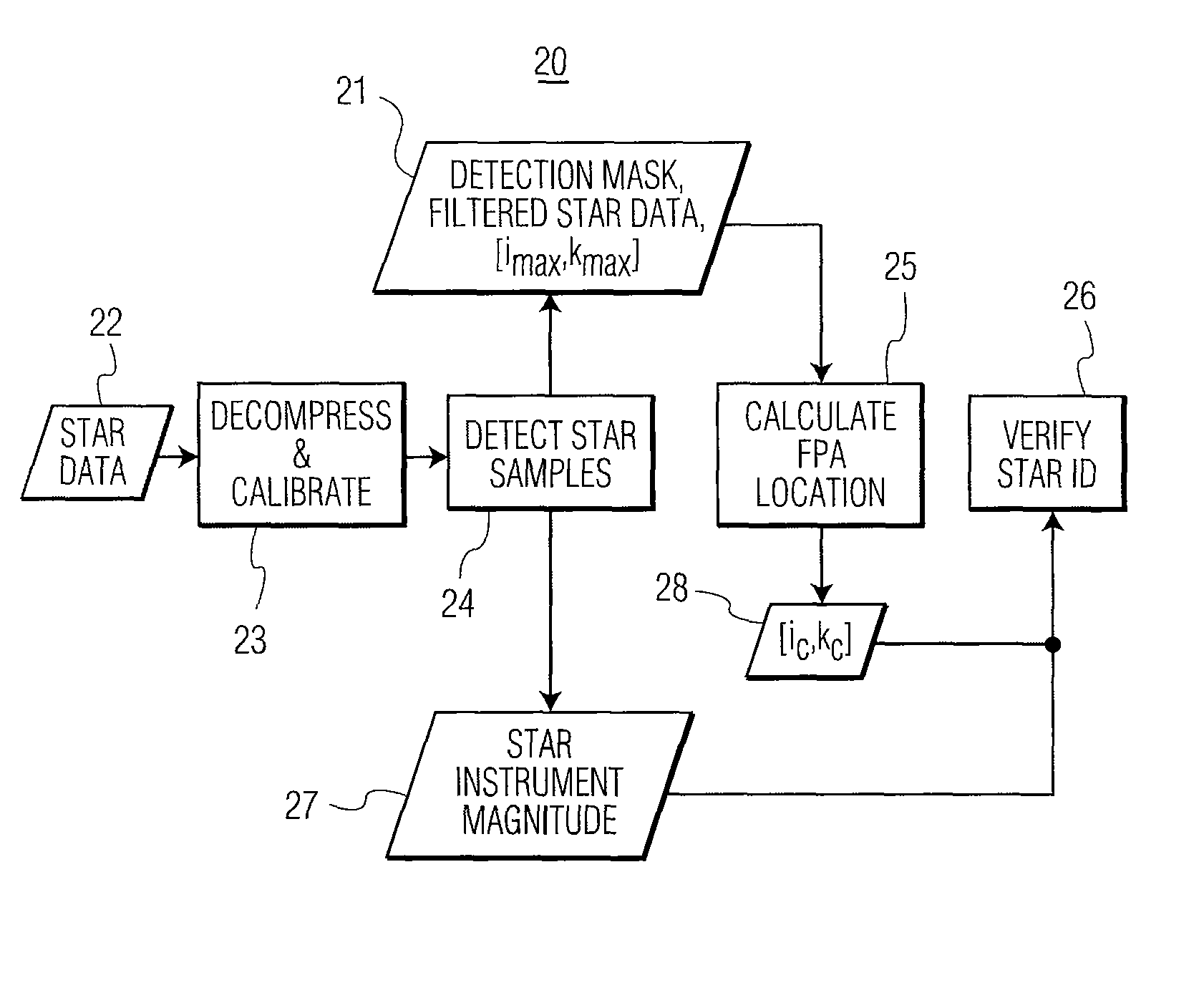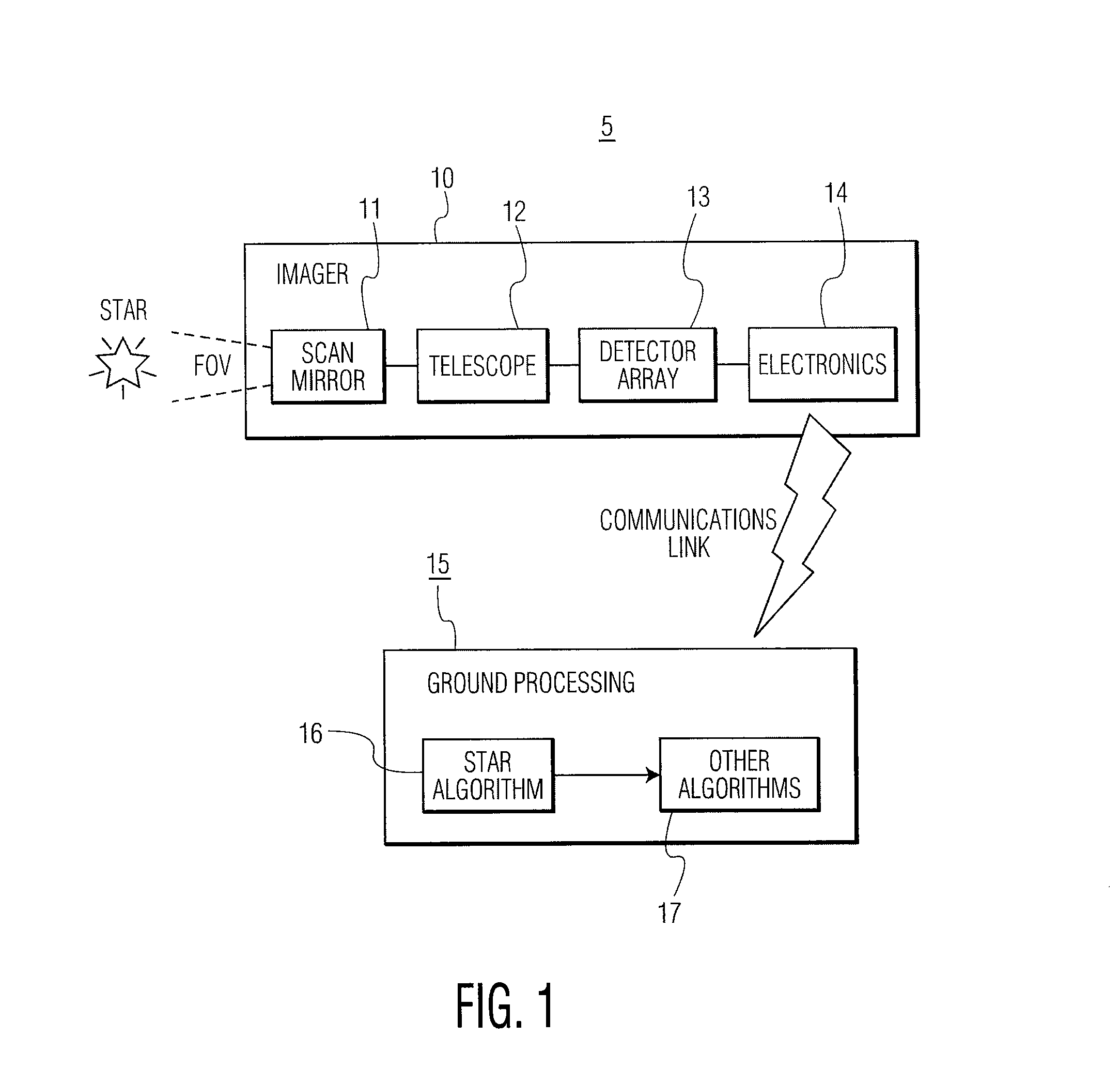Star sensing for an earth imaging sensor
a technology of earth imaging and star sensing, which is applied in the field of star sensing for earth imaging sensors, can solve the problems of insufficient standard algorithms, inability to perform star sensing, and inability to accurately detect the position of stars, etc., and achieve the effect of reducing spikes
- Summary
- Abstract
- Description
- Claims
- Application Information
AI Technical Summary
Benefits of technology
Problems solved by technology
Method used
Image
Examples
Embodiment Construction
[0001]The invention described herein was made in the performance of work under NASA contract no. NAS5-01119. The government has certain rights in the invention.
FIELD OF THE INVENTION
[0002]The present invention relates, in general, to a system and method for navigating using star imagery collected by a satellite-based imaging system. More specifically, the present invention relates to a system and method for detecting stars in a focal plane array (FPA) of an imager, in order to determine a line-of-sight (LOS) from a target star to each detector in the FPA.
BACKGROUND OF THE INVENTION
[0003]Star trackers may be used as attitude determination instruments onboard satellites. In essence, a star tracker is a camera connected to a microcomputer located in a satellite. Using the camera to capture a sensed image of the sky, stars may be located and identified. The orientation of the satellite may be determined based on these observations. A star tracker automatically recognizes the star patter...
PUM
 Login to View More
Login to View More Abstract
Description
Claims
Application Information
 Login to View More
Login to View More - R&D
- Intellectual Property
- Life Sciences
- Materials
- Tech Scout
- Unparalleled Data Quality
- Higher Quality Content
- 60% Fewer Hallucinations
Browse by: Latest US Patents, China's latest patents, Technical Efficacy Thesaurus, Application Domain, Technology Topic, Popular Technical Reports.
© 2025 PatSnap. All rights reserved.Legal|Privacy policy|Modern Slavery Act Transparency Statement|Sitemap|About US| Contact US: help@patsnap.com



